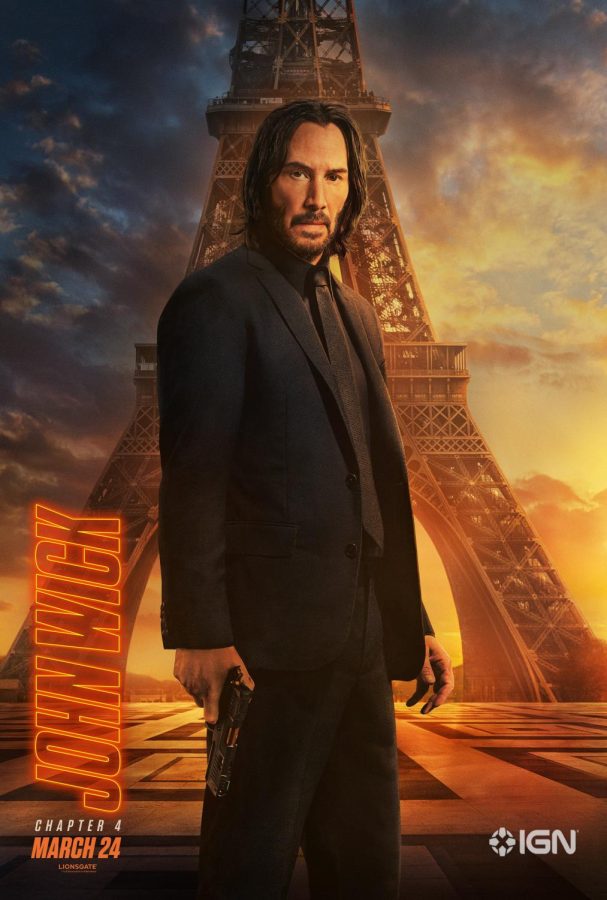John Wick: Chapter 4 review: Killing made stylish
Photo courtesy of Thunder Road Pictures
John Wick: Chapter 4 movie poster
The great action franchises—Mission: Impossible and James Bond and Jason Bourne and their ilk—each forge a distinctive style of action. That pantheon of titanic action franchises can, by now, consider John Wick a member. But Wick, now in its fourth iteration, is absent of a discernible style.
It has no style; it has a thousand styles.
Its only style is that it’s eminently stylish.
To call John Wick: Chapter 4 inventive is to do it a disservice. Wick kills people with guns and nunchucks and telephone poles. He kills people on horseback, in cars, at fluorescent nightclubs stuffed with revelers. Suitable weapons for Wick and the magnetic killers that surround him include playing cards, pencils and dogs.
The action is a beautiful dance, a finely choreographed blend of techniques. The film, directed by Chad Stahelski, who has helmed all four Wick films and is already tapped for a fifth, utilizes the camera to great effect. One-hundred sixty-nine minutes of action could, in theory, get repetitive, but the splendid mix of shots firmly prevents eyes from glazing.
Wick avoids the convoluted plots that bog down similarly minded thrillers. Wick is a man with a simple objective. He must, to achieve that objective, kill a lot of people. So he does.
Clean. Simple. Delightful.
The film decelerates at moments, action ceding the floor to acting. Keanu Reeves is excellent in the titular role, all gravelly voice and slow, thick words. Donnie Yen plays Caine, a man thrust into the fray as Wick’s unwilling adversary, with his customary mix of wisdom and dry humor. Bill Skarsgard is the oily villain, Marquis de Gramont. Shamier Anderson and Ian McShane provide relief from Reeves’s dour disposition as the mercenary Mr. Nobody and the droll, grizzled Winston.
A sentimental mission propels Wick—revenge for his wife’s murder—but the sentimentality lingers below the action, untouched for most of the film. Toward the end of the bruising, banging final act, the emotion appears, along with a previously absent dash of humor. It’s a seamless tonal shift.
Color plays a prominent role in the film, too. A hazy, luminescent green tints one scene. An icy blue pierces another.
But the primary color source is the sun, a symbol of sorts that pops up again and again. It’s a harsh, burning orange. It’s a cheerful morning yellow. It’s a wistful dawn tangerine.
The sun’s shade tracks Wick’s quest, his battle to exit a violent world and remake himself as a normal person. But he’s been running on this hamster wheel for so long. Standing in a subway or sitting at a table, Wick is awkward, uncomfortable. He’s slightly pigeon-toed. His arms swing gracelessly at his side.
Engaged in action, though, he’s poised and in command, a one-man tornado tearing through his enemies. Wick has become killing. Killing has become Wick.
Can John Wick be a normal person? Perhaps. Perhaps not. The film never deigns to answer that gnawing question. For now, during a glorious 169 minutes, Wick sticks to killing.
And that’s all right with the audience.


Allan Ferbert • Sep 22, 2024 at 3:10 pm
GO JOHN.DO YOUR THING.